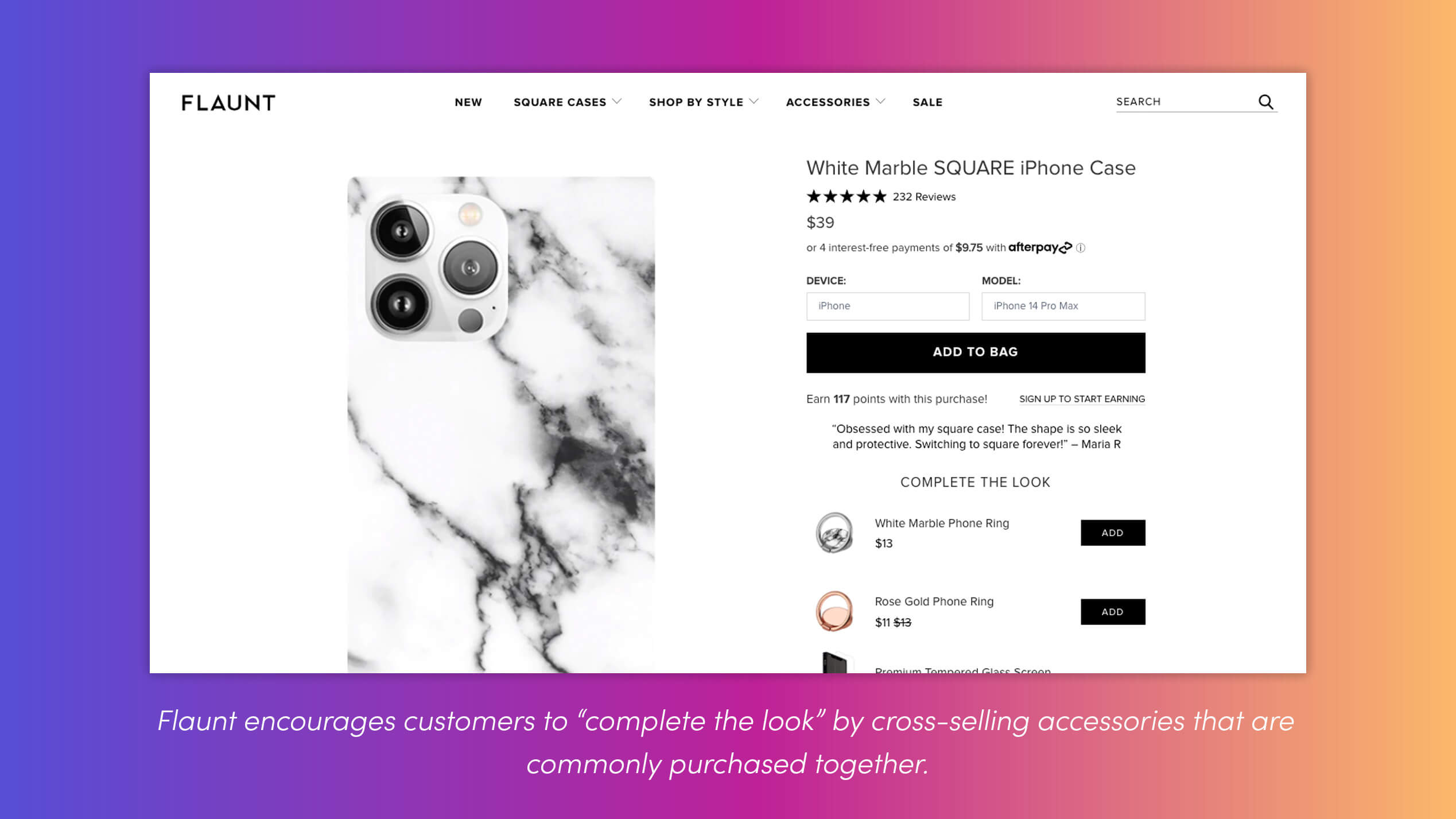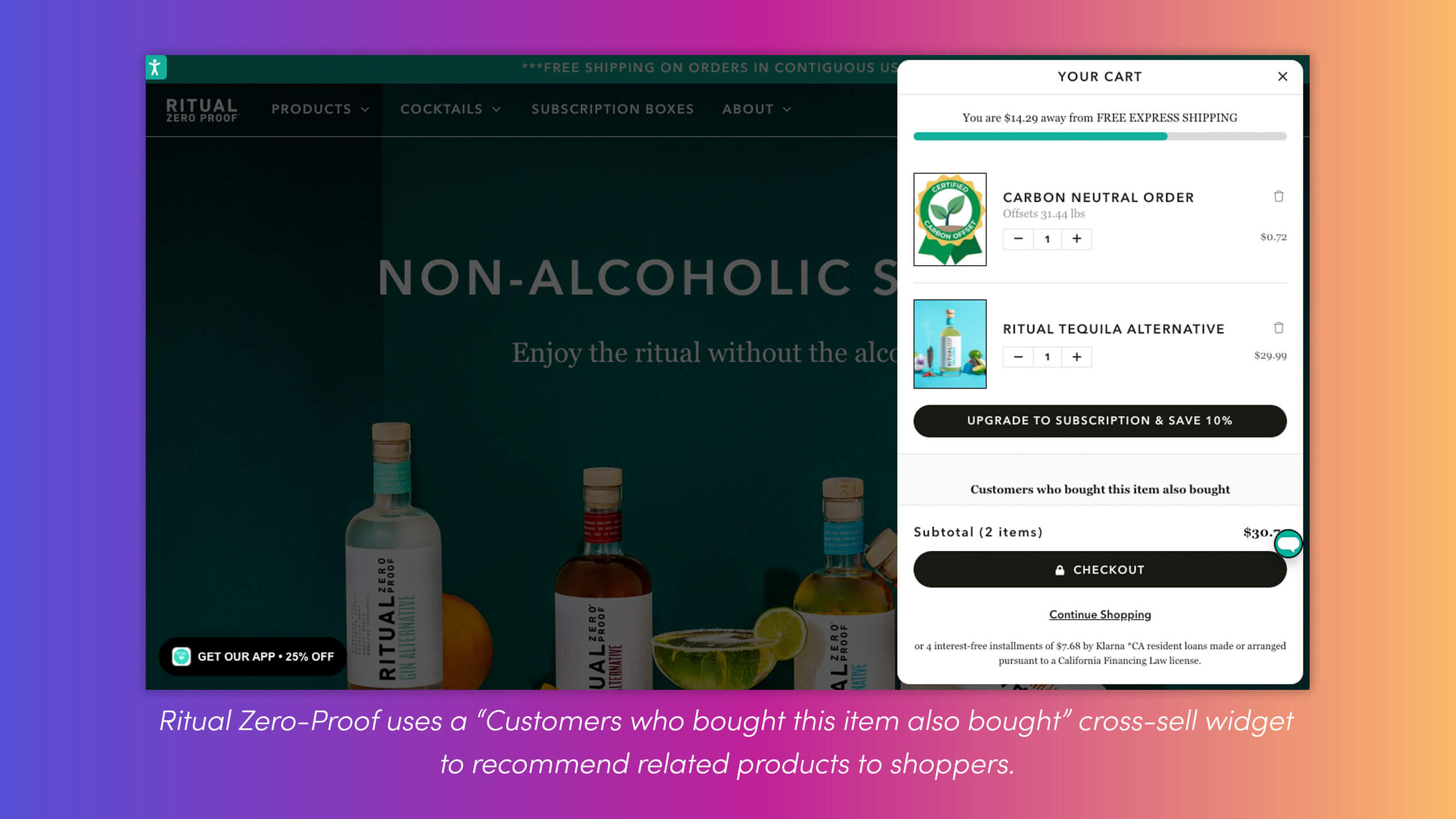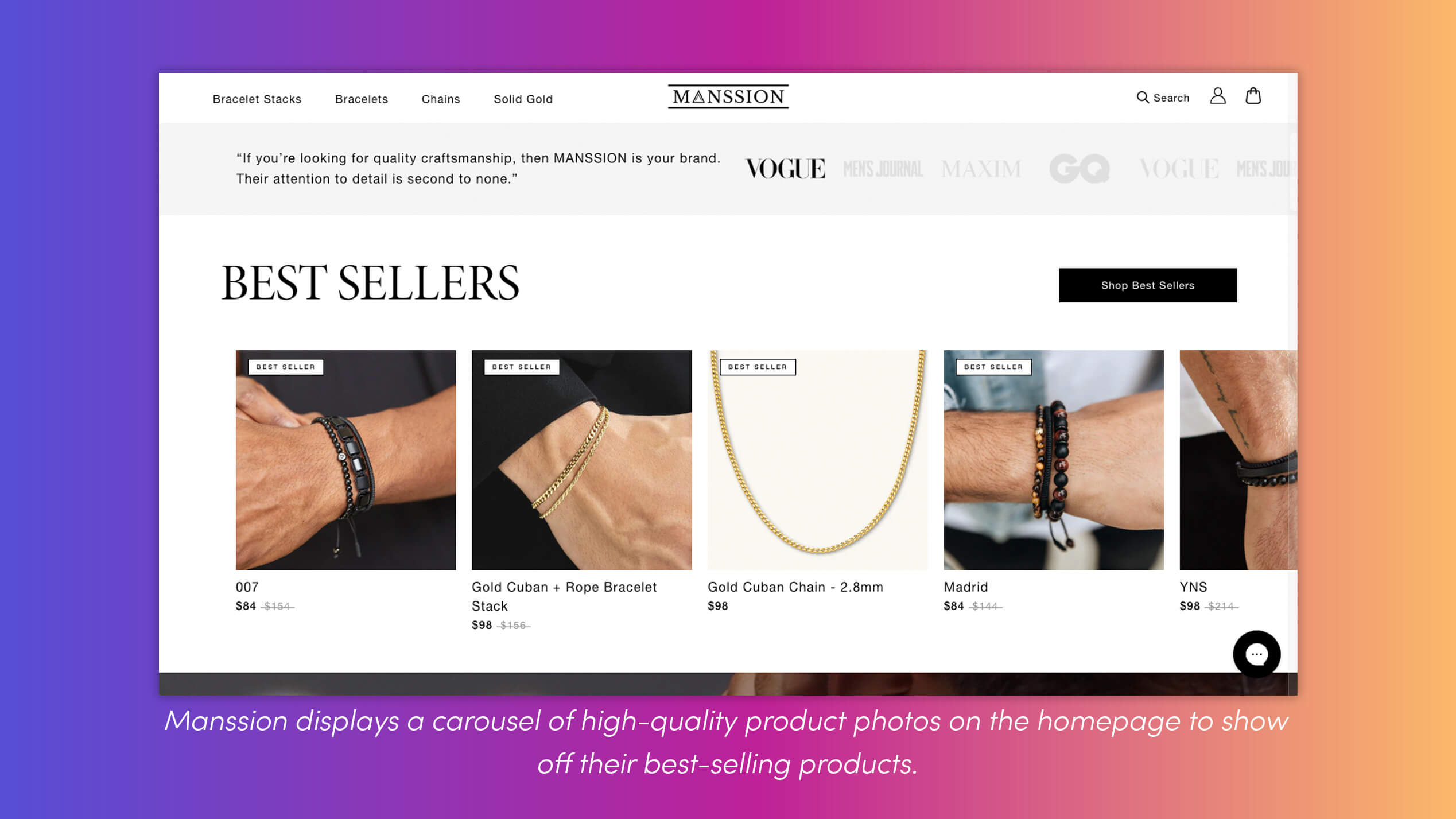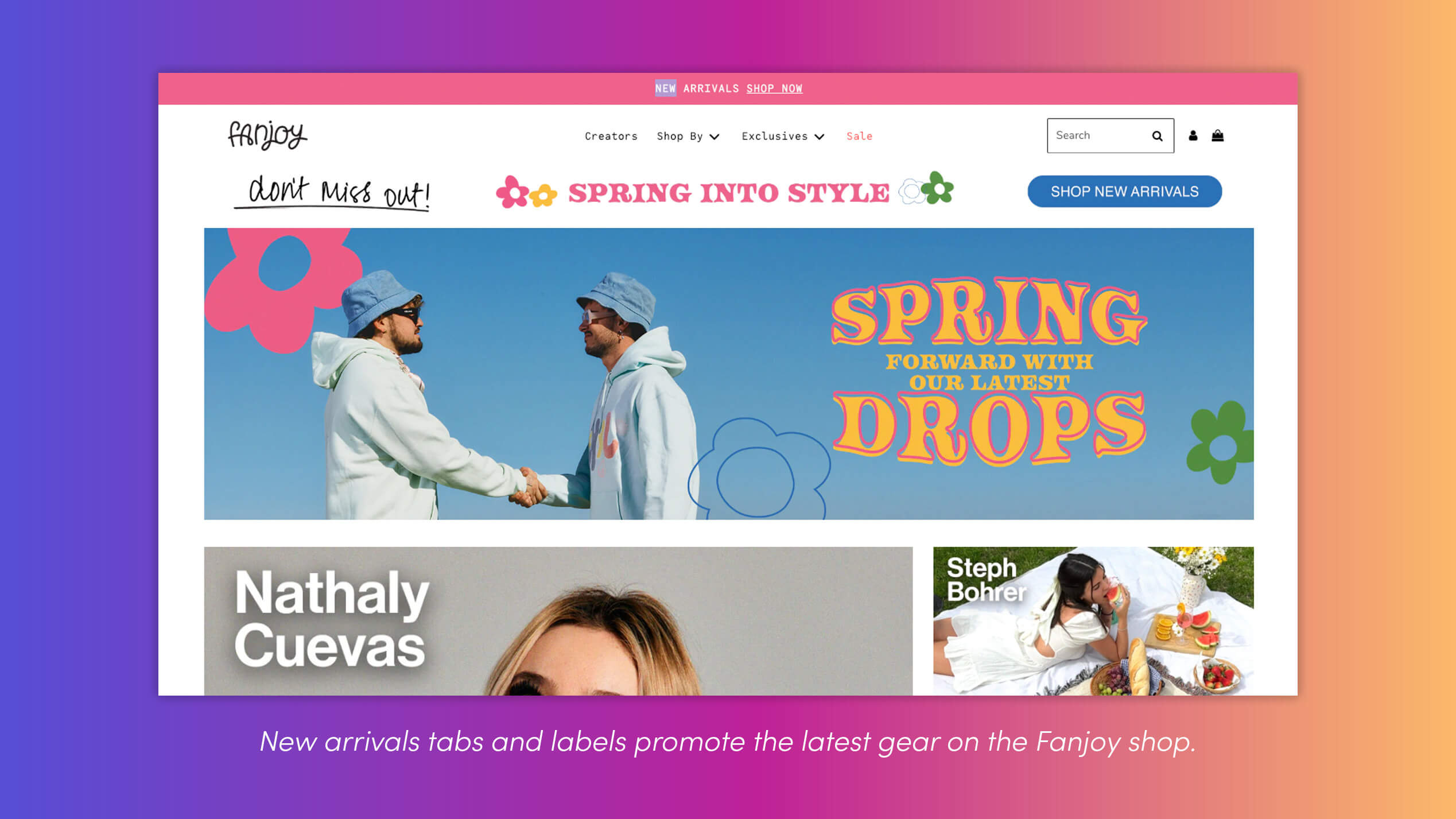- Gain insights on different product recommendation strategies to determine which fits best with your specific business model and goals.
- Discover key factors to consider when choosing a product recommendation strategy, such as customer behavior, data analysis, and personalization techniques.
- Make informed decisions on the most effective product recommendation strategy to drive business growth, increase conversions, and enhance customer engagement.
Wouldn't it be cool...
...if you could predict what your customers want before they even know it?
While we can't give you a crystal ball 🔮, there's something almost as good: personalized product recommendations. This means using smart technology (like AI and Machine Learning) to predict what your customers are likely to buy.
Using AI to recommend products can give your customers a personalized shopping experience. And doing THAT will help you generate more sales and earn customers for life. But first, you need a product recommendation strategy.
What are you waiting for? Here are some tips for finding the right product recommendation strategy for you.

1. Define the Goals of Your Product Recommendation Strategy
Clearly defined goals help you focus on what you want to achieve with your product recommendation strategy and provide a benchmark against which you can measure performance.
Clear goals help you focus on what you want to achieve with your product recommendation strategy. They provide a benchmark against which you can measure performance.
Some goals to consider include the following:
Reduce Cart Abandonment
Offering complementary products can encourage customers to keep shopping and complete their order. Research shows that personalized recommendations in the cart influenced 92% of online shoppers to buy.
Improve Customer Retention
Did you know 56% of online shoppers are more likely to return to a website that recommends products? It's true. Product recommendations can help customers discover new merch, leading to repeat purchases and increased customer loyalty.
Increase Average Order Value (AOV)
By definition, personalized product recommendations are relevant to the customer's interests or needs. Thus, customers often add them to their cart and increase their overall spend. 54% of retailers have said product recommendations are a key driver of their AOV.
Increase Conversions
Product recommendations are an excellent way of driving more sales and conversions on your ecommere site. You can cross-sell complementary products or upsell customers to higher-priced items. Research has found that recommended products account for up to 31% of ecommerce site revenues.
2. Map Out Your Customer Journey
Next, you'll need to identify ways to make it easier for your customers to take the actions you want them to take to achieve the goals you've set. The best way to do this is by mapping out the journey that customers will take on your online store.
A customer journey map gives you insights into the different stages that customers go through before and after making a purchase. This includes the touchpoints and interactions that occur along the way. It allows you to understand your customers' needs, preferences, and pain points. These insights help inform the types of product recommendations that are most likely to be effective.
Remember that each of your customers is on their own journey when they shop on your website. To help them along, you need to create a map of their journey from when they first arrive on your website to when they make a purchase. Make sure to do this for all the different types of customers you have.
For example, a first-time visitor to your ecommerce store may feel overwhelmed by the number of options available. Best sellers or trending product recommendations can help narrow down choices and nudge new visitors toward their first purchase. On the other hand, a customer who has already added something to their cart might be interested in complementary or related products.
Eighty-nine percent of successful businesses say that understanding what customers need and providing help during their journey is essential for growth. If you personalize recommendations based on where customers are in their journey, they're more likely to make a purchase. This not only helps them but it also improves their overall experience on your website.
3. Gather First-Party User Data

To give customers what they want, it's essential to have a strong data foundation. Insights from your customer data will provide a deeper understanding of their needs and preferences. This is key for delivering effective personalized product recommendations at scale.
69% of customers appreciate personalization as long as it is based on data they have explicitly shared with a business. Enter first-party data. This is information collected directly from customers with their knowledge and consent. You can collect this information from your own platforms, such as your website or social media. There are several types of first-party data you can use to power your product recommendation strategies.
Contextual Data
This takes into account a customer's current situation, such as the time of day, weather, and location. This real-time data can help businesses recommend relevant products that match their customer's immediate needs.
Here's an example of how an online store can suggest shoes to a customer. They can look at the customer's browsing history, where they are located, what kind of device they're using, and the time of day. Then they can recommend shoes that are similar to what the customer has bought before, are appropriate for their current needs, and are trendy for the current season.
Historical Data
This data is analyzed and collected from a customer's past purchases, searches, views, and purchase amounts. For example, you can use a customer's previous purchase history to suggest similar products they may be interested in buying.
Behavioral Data
Behavioral data analyzes a customer's interactions with the website or app. Like pages viewed, products clicked on, or items added to the cart. For instance, you can track customers' browsing history, searches, and clicks to identify their interests. Based on this data, you can recommend related products that align with items they are currently looking at on your website.
4. Understand the Different Types of Product Recommendation Strategies
The right product recommendation strategy ensures that customers receive suggestions that match their interests and needs. This improves the user experience and boosts revenue.
Here are some popular and effective product recommendation strategies you can use to drive results for your online store.
Increase Average Order Value With "Frequently Bought Together" Suggestions
"Frequently bought together" recommendations are like peanut butter and jelly or Bonny and Clyde. They're for products that perfectly complement each other. A frequently bought together recommendation strategy can help increase average order value. It works by encouraging customers to add complementary products to their cart. It can also enhance the customer experience by providing convenient product bundles. This reduces the need for shoppers to search for related items separately.

Frequently bought together recommendations can be shown during the checkout process or on a product page. It shows customers items that are commonly purchased together.
Flaunt Cases uses this strategy to encourage customers to “complete the look.” The brand shows customers accessories that are commonly purchased with items in their carts.
Boost Cross-Sells With Related Products
Related products are like sidekicks. They support and enhance the hero. A "related products" recommendation is perfect for cross-selling products. This is because it suggests items that complement or enhance the customer's current purchase. This increases their chances of making additional purchases.

Ritual Zero-Proof is a maker of premium non-alcoholic spirit alternatives. The brand uses a “Customers who bought this item also bought” in-cart cross-sell widget to recommend related products to shoppers when they add an item to their shopping cart.
Add Social Proof by Showcasing Your Bestsellers
Leverage the power of FOMO by showcasing your top-selling and most popular products.
Social proof is a powerful way to boost sales and drive conversions by showing customers how popular a product is. That's because when people see that others are buying a particular product, they are more likely to buy it too. This is called the bandwagon effect.
By highlighting popular products, you can also make them seem more valuable and persuade people to buy them. This can create a sense of urgency because customers might feel like they will miss out on something if they don't buy the product quickly.

Manssion is a designer of premium men's jewelry. On their homepage, they showcase a carousel with high-quality product photos of their bestsellers. This recommendation strategy along with three other strategies has helped boost Manssion's AOV by 18.65%.
Promote New Products With a New Arrivals Recommendation
Place a "new arrivals" product recommendation widget on your homepage, category page, or in a dedicated "new arrivals" section. This strategy helps you increase the visibility of new products and reduce the time to market.

Fanjoy is a leading ecommerce merchandise and brand-building partner for the world's most beloved internet creators. And they're not shy about promoting their new products. Tabs and labels showcasing their new arrivals take up center stage at the top of their home page.
5. A/B Test To Measure Results
To quantify the impact that your product recommendation strategies have on your business metrics, set up A/B tests. A/B testing is crucial for refining, optimizing, and improving product recommendations. This ultimately increases sales and revenue.
You can A/B test your product recommendations in two ways, by setting up control groups or randomly sampling your customers.
Control Groups
Set up control groups to compare metrics between customers who have seen product recommendations and those who have not. This will help you determine how successful the product recommendations are.
Random Sampling
Randomly divide your customer base into two groups. Next, apply different product recommendation strategies to each group. Then, compare the performance of both groups to determine which strategy was more effective.
Create Better Personalized Shopping Experiences With Rebuy
The right product recommendation strategy can make all the difference to the success of your ecommerce website. And with the right approach and tools, you'll have a powerful system that helps your customers discover new products. It will also keep them coming back for more.
Rebuy is straightforward and simple to use. Our plug-and-play solution allows you to unlock AI-backed product recommendations. Best of all, you don't need any coding or technical expertise.
You can customize every detail of your product recommendations and create personalized experiences that make your customers feel like they have a personal shopper guiding them toward products they'll love.
Discover first-hand how you can build a personalization strategy that meets your business goals. Request a demo with us today.
•••
Try Rebuy free and see why the world’s top brands use Rebuy to accelerate sales growth.
Interested in partnering with Rebuy? Let's do it.
To keep up with the latest trends, platform updates, and more, follow us on LinkedIn.
.jpg)